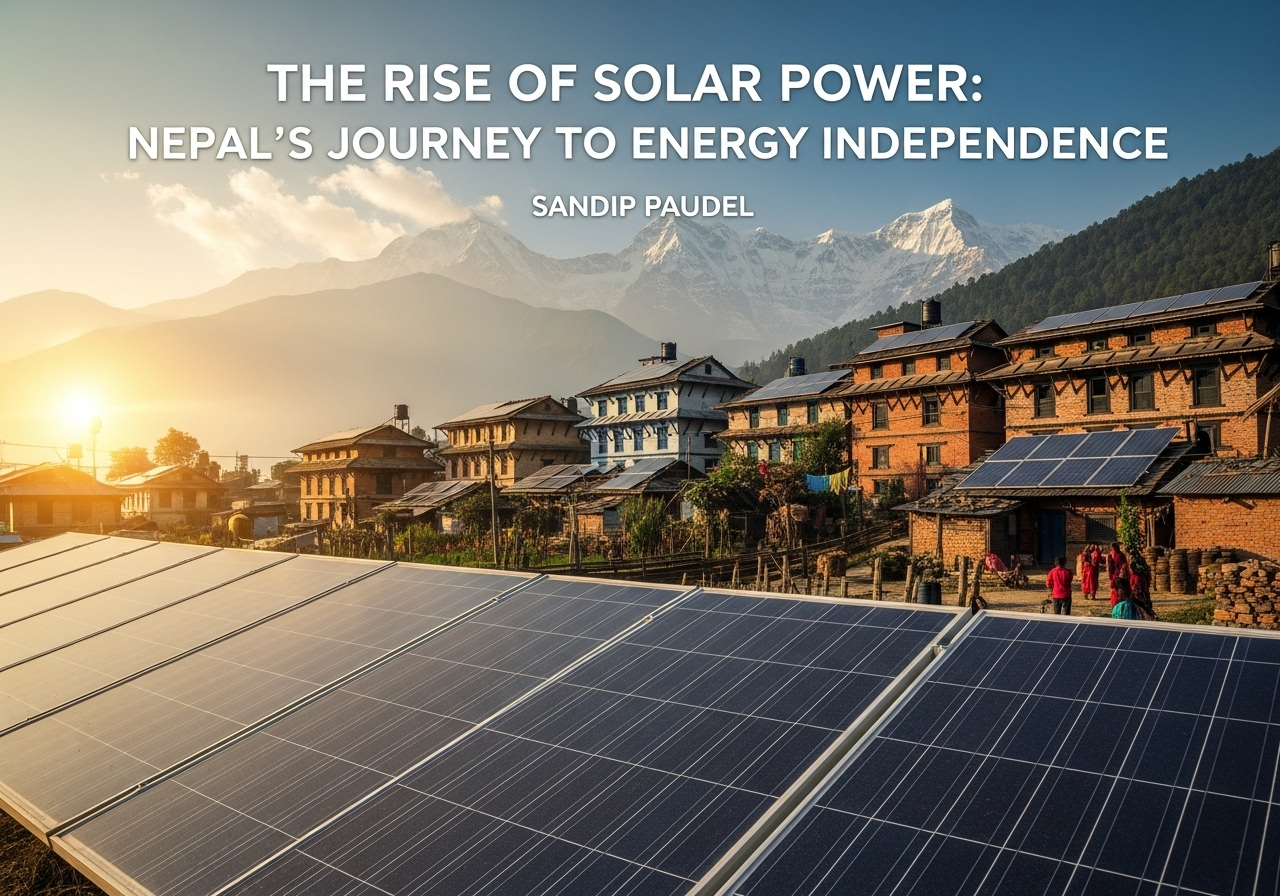For decades, Nepal’s energy story has been centered on hydropower. But in recent years, solar power has quietly stepped in as a strong partner on the path to energy security.
Nepal’s solar journey began in the 1960s with small systems that powered health clinics, telecom towers, and vaccine refrigerators in villages far from the grid. The first photovoltaic system was reportedly installed in 1962. In the 1980s, with support from the French government, Nepal built its first small solar power stations in places like Simikot, Gamgadi, and Tatopani. These may have been modest in size, but they showed how solar could bring reliable electricity to areas where big infrastructure was impossible.
A major milestone came in 1996 with the creation of the Alternative Energy Promotion Centre (AEPC). As Nepal’s national renewable energy agency, AEPC has been a driving force behind solar adoption. Through the Renewable Energy Subsidy Policy (introduced in 2000), solar home systems became affordable for rural families. With support from government subsidies, microfinance, and a growing private sector, solar use spread quickly. International partners like Denmark, Norway, Germany, and the UK also stepped in with funding and technical help.
In the early 2010s, Nepal faced long hours of loadshedding, with power cuts lasting up to 18 hours a day. Rooftop solar became a lifeline for homes and businesses. After the 2015 earthquake, when the grid failed, solar kept hospitals and communication systems running. Similarly, in places where the grid could not reach, mini and micro-grids brought light to remote villages. Through programs like the Karnali Ujjyalo Programme, solar plants with battery storage have been installed in districts such as Dolpa, Mugu, Jumla, and Humla. In 2018, the government introduced net metering, allowing households to sell extra electricity back to the grid. This made solar even more attractive.
Today, solar in Nepal is no longer just small-scale. It has grown into a solid industry. Grid-connected solar capacity has reached over 141 megawatts, with private power producers running most of it, and the Nepal Electricity Authority (NEA) also operates its own projects. Off-grid programs remain just as important. Thanks to AEPC, nearly one million solar home systems are in place, along with thousands of solar mini-grids and water pumps for farming and drinking water.
The NEA has big plans for the near future. It aims to add 960 megawatts of solar to the grid within two years. When it recently invited bids for 800 megawatts, it received proposals for more than 3,600 megawatts from 300 projects, showing strong private sector interest. The government has also set ambitious goals, targeting 2,100 megawatts of solar capacity by 2030, with clean energy meeting 15 percent of total demand.
Nepal has huge potential. Studies show that the country could technically produce about 432 gigawatts of solar energy, compared to only 42 gigawatts from hydropower. With 300 sunny days a year and high solar radiation, Nepal is blessed with conditions that many industrialized nations envy.
Solar is also transforming farming. In the Terai, where climate change has made rainfall unpredictable, solar water pumps are helping farmers irrigate their land reliably, boosting yields and incomes.
The government is also stepping up. Supportive programs like the Nepal Renewable Energy Programme, Energising Development (EnDev), SASEC, etc, have helped expand solar access by funding projects and connecting rural communities. AEPC and the Sustainable Energy Challenge Fund are offering subsidies and performance-based incentives, backed by international donors like UKAID and GIZ.
Businesses are increasingly turning to rooftop solar, especially under the Energy Service Company model, where service providers install and operate systems while selling electricity to clients at lower prices than the grid. Surplus energy can then be sold back through net metering or billing. Business developers and investors are also putting money into utility-scale projects, typically larger than one megawatt, which are becoming an important part of Nepal’s clean energy expansion. This combined growth is further supported by government incentives such as VAT exemptions on solar equipment, loan subsidies, and favorable purchase agreements.
To address the challenge of peak demand in mornings and evenings, when solar cannot generate, Nepal is now exploring battery energy storage systems to make the supply more stable and reliable. Recent budgets have also cut customs duty on batteries and storage equipment to just one percent, recognizing the importance of storage for balancing daytime solar generation with evening demand.
From lighting remote villages to powering industries, solar energy has come a long way in Nepal. With supportive policies, private sector involvement, and international backing, solar is no longer just an option but a central part of Nepal’s energy future. The journey has only begun, and the future looks brighter than ever.
